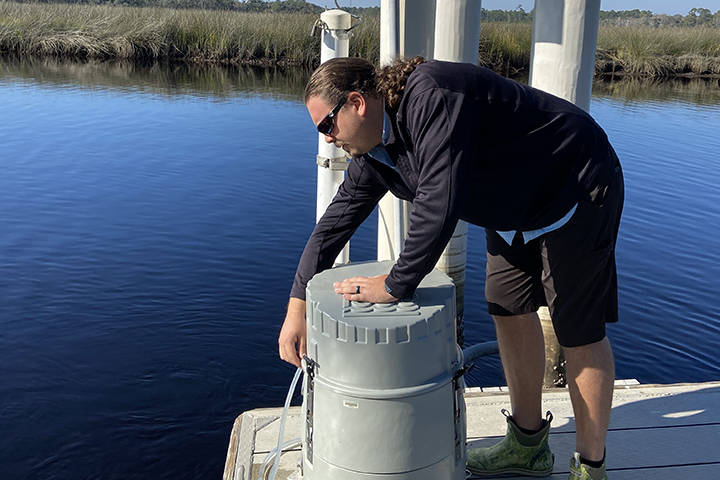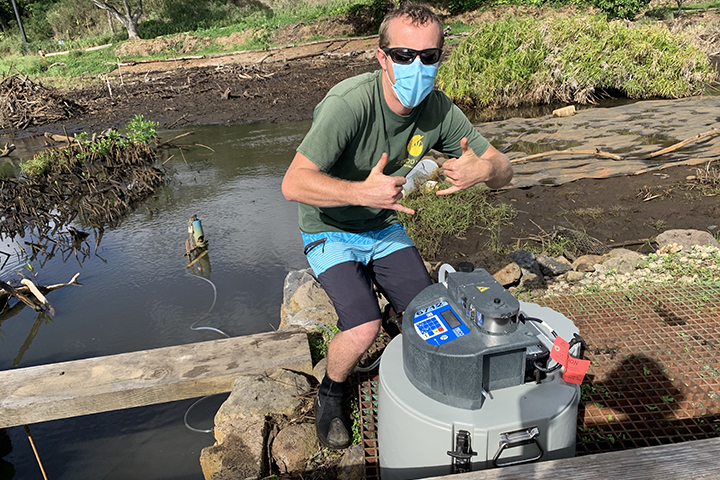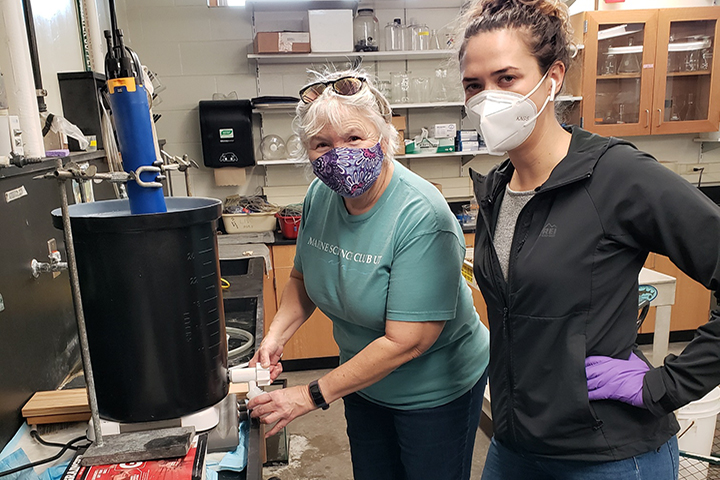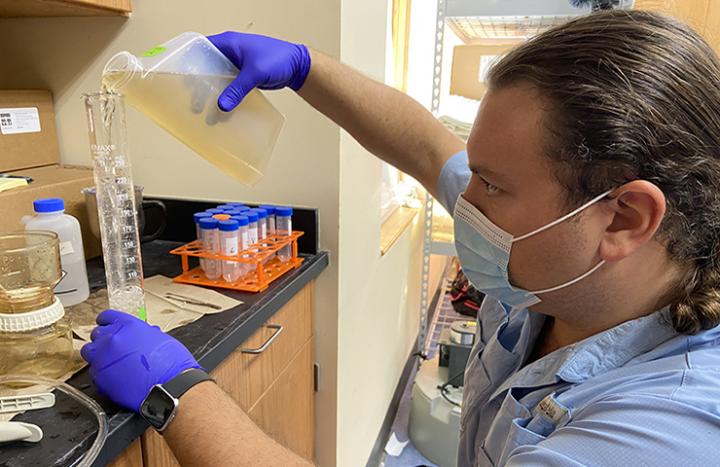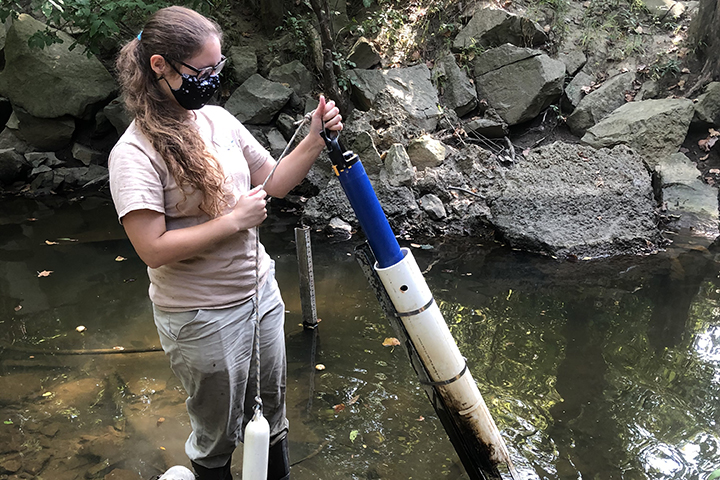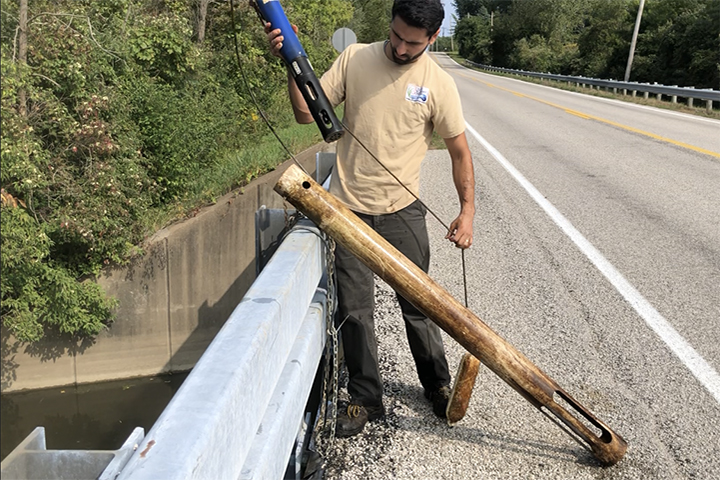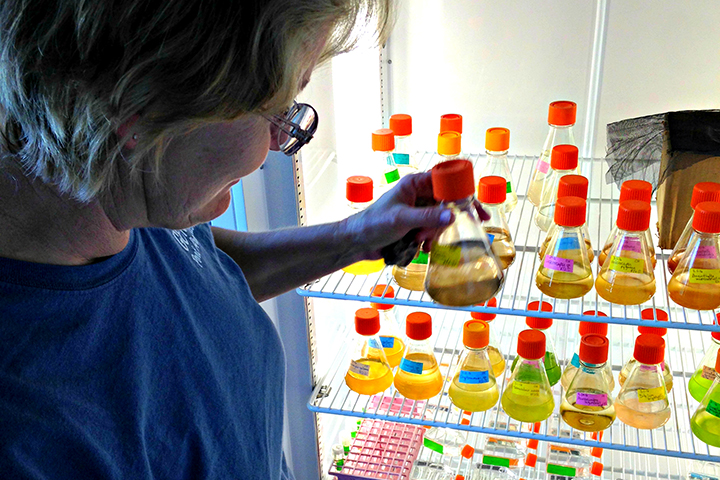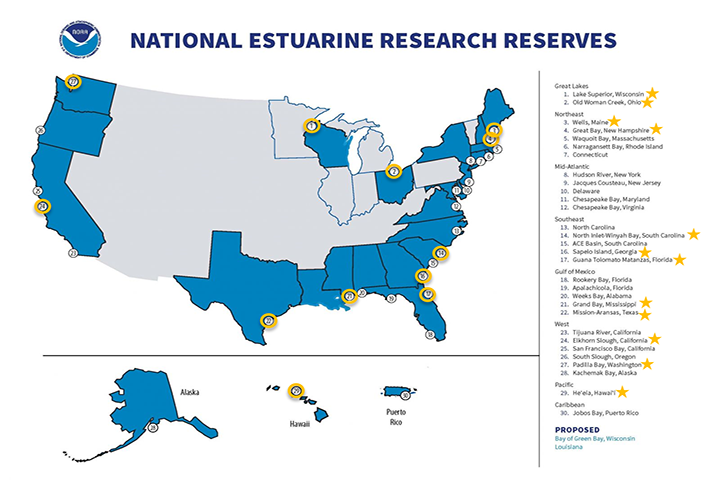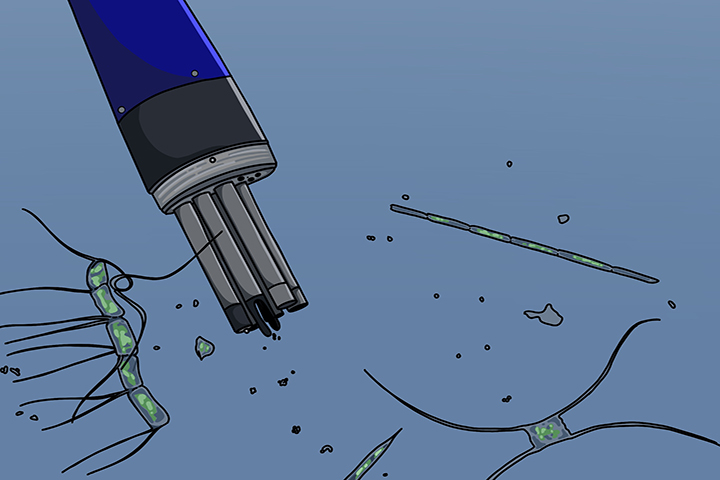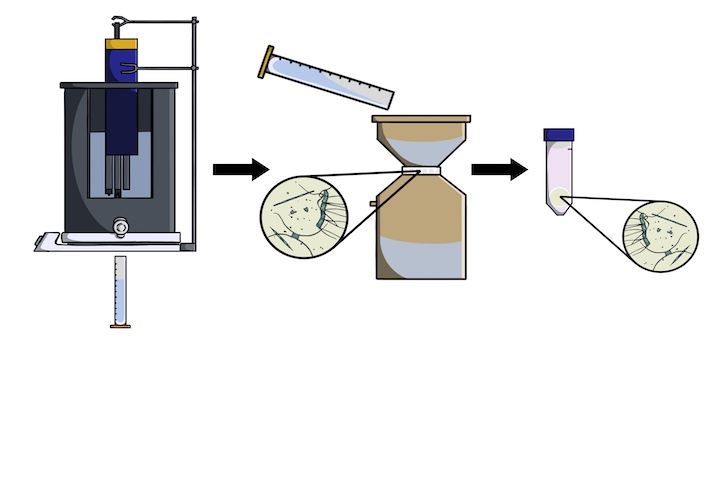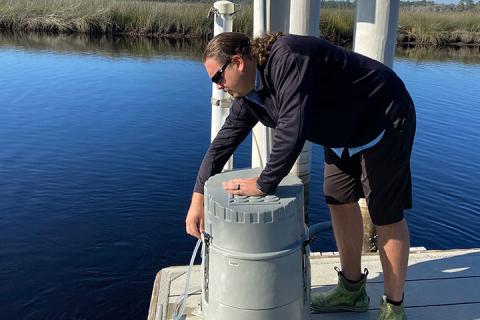
Researchers across the reserve system compared results from new YSI in situ sensor technology to existing practices for measuring chlorophyll – developing protocols and recommendations designed to catalyze the NERRS System-wide Monitoring Program into the nation’s most comprehensive algal bloom monitoring program.
The project
Nutrient pollution and algal blooms in estuaries degrade water quality for people and aquatic life. Careful tracking of chlorophyll a concentrations - a proxy for phytoplankton biomass - helps managers understand the patterns and drivers of nutrient pollution and food web implications in their estuary. The National Estuarine Research Reserve System’s long-term monitoring program measures chlorophyll a concentrations in monthly water samples. However, these measurements were insufficient for tracking plankton dynamics, which fluctuate hourly. When new technology capable of measuring chlorophyll every 15-minutes arrived – the YSI EXO Total Algae fluorometric sensors, practitioners needed to understand the relationship between current measurement approaches and this new technology. The project team developed, tested, and shared protocols for the new sensors and provided recommendations to catalyze the System-wide Monitoring Program into the nation’s most comprehensive algal bloom monitoring program.
Research staff from 12 reserves assessed sensor performance by comparing field and laboratory sensor measurements to concentrations of chlorophyll extracted from water samples. After identifying environmental factors that could interfere with sensor measurements, team members developed protocols for correcting the new data streams, calibrating sensors, and managing data. The team facilitated collaboration by creating an interactive dashboard allowing everyone to visualize and contextualize results across reserves.
The impact
- Reserves have enhanced capacity to advance algal bloom research nationally by collecting and interpreting high-frequency, sensor-based chlorophyll data. Researchers on the project team will use the results to implement high-frequency monitoring at their sampling sites. Other reserves use the decision tree to determine where adopting in situ chlorophyll a monitoring is appropriate and replicate the study. (See Recommendations for Chlorophyll Monitoring)
- For researchers deciding if installing in situ sensors aligns with monitoring goals, the project’s recommendations provide information about influences on sensor readings and the relationship between in situ fluorescence and extracted chlorophyll measurements. (See Products) Extractions can help understand long-term change when compared to historical data, while frequent in situ measurements can assess short-term variability, such as how chlorophyll changes with tides, from day to night, seasonally, or after storms. Having both approaches as options strengthens the reserve system as a network of living laboratories exploring topics ranging from harmful algal blooms and coastal acidification to ecosystem metabolism and primary production drivers.
- The project team provided the SWMP Data Management Committee with a list of recommendations including standard operating procedures for calibrating the new sensors, quality assurance and control, and technician training resources, all aimed to support informing decision-makers about water quality issues. (See Products)
- The ability to collect near real-time chlorophyll data supports early detection and rapid response to algal blooms, as well as education and outreach. Aquaculturists can use these data to assess food availability for filter feeder crops. Teachers can integrate data with efforts to educate students on data literacy and food web dynamics.
